Orchard Orioles nesting in Ajax, Ontario
On a recent day spent cycling along the Waterfront Trail from Scarborough to Ajax, Ontario, Bob and I drew up at a picnic table to have our lunch and rest in the shade. There was lots of bird activity in the thickets of sumac, deciduous trees and shrubs that dotted the wide open space of the trail-side park. When Bob spotted a red and black bird, it took us a few minutes to identify it as an Orchard Oriole (Icterus spurius), a Lifer for us.
We really did not plan to spend a lot of time photographing birds that day but are always on the lookout for any new species of bird or butterfly that might cross our paths. Alongside the bicycle trail, swaths of Milkweed, large patches of raspberry bushes, and many naturalized areas make an inviting habitat for all sorts of creatures. The photo above shows the male with the female Orchard Oriole in front of him, just a little higher on the branch.
We first became aware of the female Orchard Oriole when she visited some of the Milkweed plants in search of insects. The male was hot on her tail, and swooped close to the ground before landing on a flowerhead, but he took flight again as I drew nearer.
The male Orchard Oriole had a habit of returning to the same treetop, which made sense since they like to forage in tree foliage for insects and spiders, but I soon observed that he always departed towards the same location in a nearby thicket.
When I listened carefully, it became evident that a goodly amount of chirping and vocalizations of a kind were emanating from one area in a thicket of Sumac bushes. I was convinced that there were either hatchlings or fledglings somewhere within. As I scanned the border of Sumac trees with my binoculars, I discerned a small, basket-like nest well hidden behind a screen of leaves. It appeared to be empty.
The location of the nest was typical for an Orchard Oriole, attached as it was to the fork of a horizontal branch in the tall Sumac. It takes a female Oriole about six days to construct a tightly-woven basket fashioned from long blades of green grass that stiffen and fade as they dry. To prepare the bottom of the nest for eggs, the female uses soft vegetable matter such as thistle or dandelion down, catkins, bits of animal hair or even feathers.
With Bob and I in the vicinity taking photographs of the birds and their nest, the male Orchard Oriole was more prone to keeping vigil over their nest tree, so we made sure to keep our distance. Orchard Orioles are semi-colonial, which means that often several pairs of these Orioles will build their nests in the same tree. There may have been others in the same thicket, but we didn’t want to intrude on their space so looked no further.
On several occasions, I witnessed the male Orchard Oriole arriving in his staging area before he delivered freshly-caught food to the nest. In breeding season, these Orioles primarily eat a selection of insects that includes larvae, beetles and grasshoppers as well as spiders.
Bob and I had taken note of the masses of tiny insects on the Milkweed flowers, and together with their sweet perfume, they seemed to attract both adult Orchard Orioles who went to town probing deep into the flowers in search of some ants or a wasp or even to sip the nectar.
After each foray, the adult Orchard Orioles came back to perch near the nest. At one point, when both were foraging for food, we moved in for a closer look.
The nest was smaller than it appeared through the binoculars, only about 4-5 inches across, but it was deeper than we had previously thought. An Oriole’s nest quite often is a hanging pouch or sac, and though this one did not appear to be hanging, it certainly resembled a pouch. As we quietly looked at the nest, lo and behold, a tiny head and pointed beak poked up above the rim.
Next thing you know, the female Orchard Oriole arrived with a tidbit for the nestling.
Orchard Orioles arrive on their breeding grounds later than most spring migrants. They winter anywhere between Mexico and northwestern South America and do not leave for their summer habitat until March or April. This sees them ready to perform courtship displays in their breeding habitat starting anywhere between the end of April through to the end of May.
The female begins building her nest right after copulation, and a week later, she lays between two and seven eggs. The male brings her sustenance for close to 2 weeks while she incubates the eggs. The nestling is well beyond a newly-hatched baby judging by the colour of its breast and development of its head.
When first hatched, an Orchard Oriole chick is downy grey or buff-coloured. As this chick moved about its nest, we could see that the plumage on its abdomen was already showing yellow, and wing bars were detectable. No downy feathers remained to be tousled by the breeze.
Orchard Oriole chicks fledge after 11-14 days, but in the interim, both the male and female adults provide nourishment for the quickly-growing nestlings. As we looked on, there was a constant procession of offerings from the father Oriole who always paused in the maple tree before moving in close to the nest…
and in the chick’s excitement to be fed, it became braver by the minute, perching on the edge of the nest while it waited for incoming provisions.
The female Orchard Oriole was a little more direct in her approach to the nest, but still stood off a short distance to be sure no predators were observing her movements.
The exuberant chick was eager to have mom serve up some tasty mouthful and made its protests known for the lapse in attention to its needs.
We were not able to establish if there were other chicks in the depths of the nest, but mother Oriole was kept busy regardless, satisfying the needs of this growing baby. Given our observations of the advanced development of the chick’s wings and tail, I think the chick was close to leaving the nest.
Under most circumstances, Orchard Orioles only raise one brood per season, so once the baby Oriole fledges, it will remain with its parents in the area of the nest, under the cover of thick vegetation, for about a week, when the male Orchard Oriole will leave to begin his flight southward. This species of bird wastes no time before heading back to the wintering grounds, sometimes departing as early as mid-July.
As the season marches on, the female Orchard Oriole and her fledgling will feast on fruits, nectar and even parts of flowers before they, too, take flight in early August headed to Mexico and beyond.
For the time being, though, this young Orchard Oriole can enjoy the shady cover of its nest tree along the shore of Lake Ontario…a well-chosen, ideally-suited breeding habitat that is preferred by this species of bird. I still can’t believe that we found the nest!
Frame To Frame – Bob and Jean

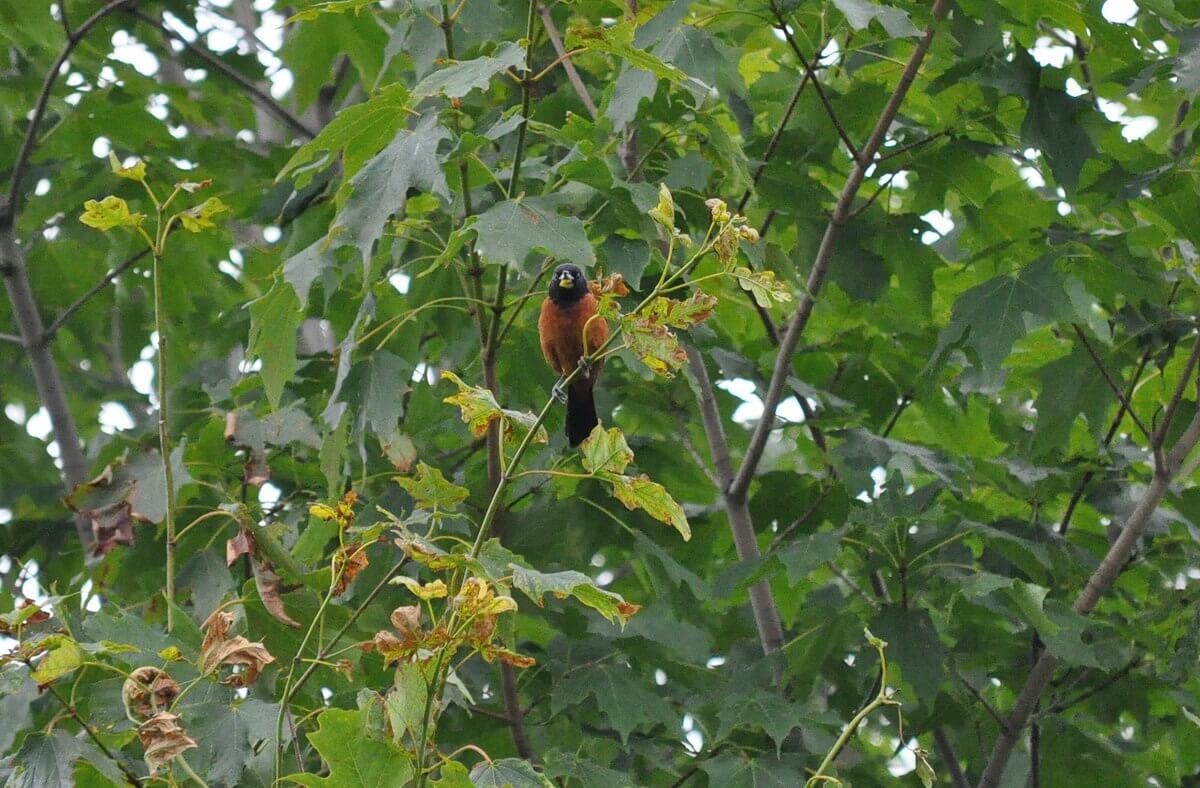
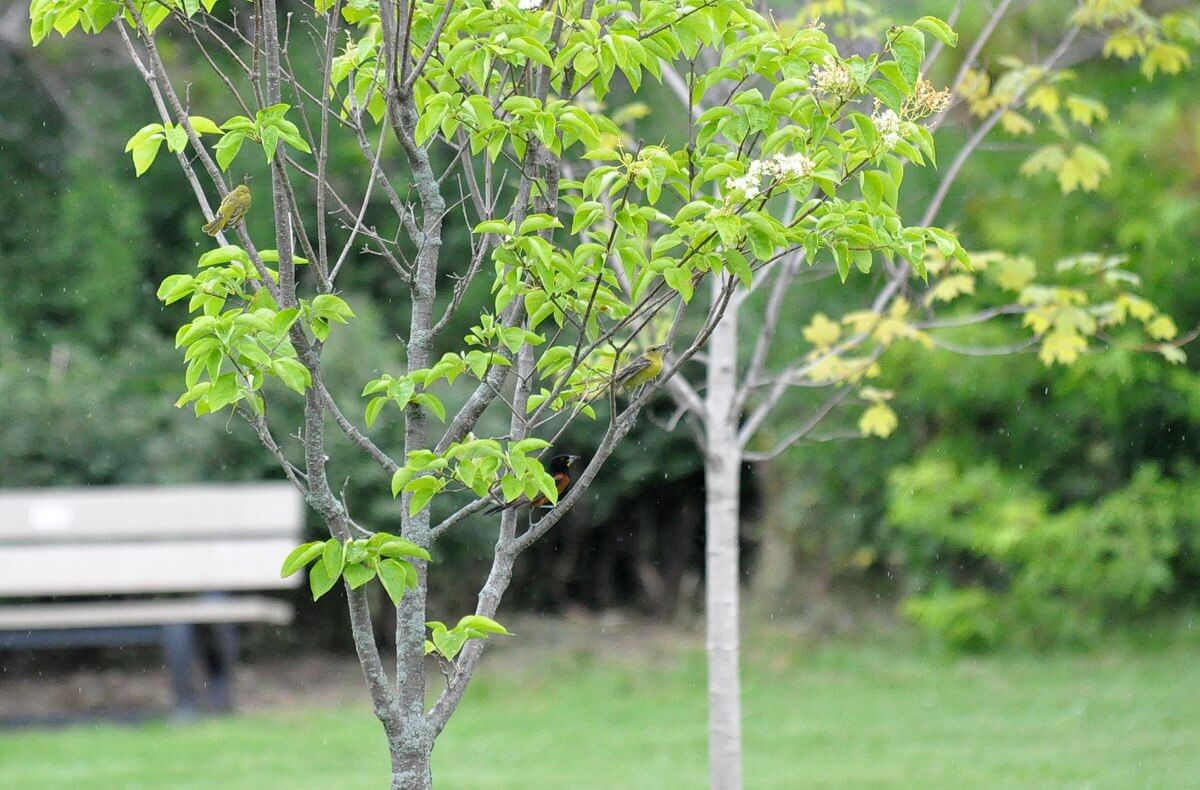

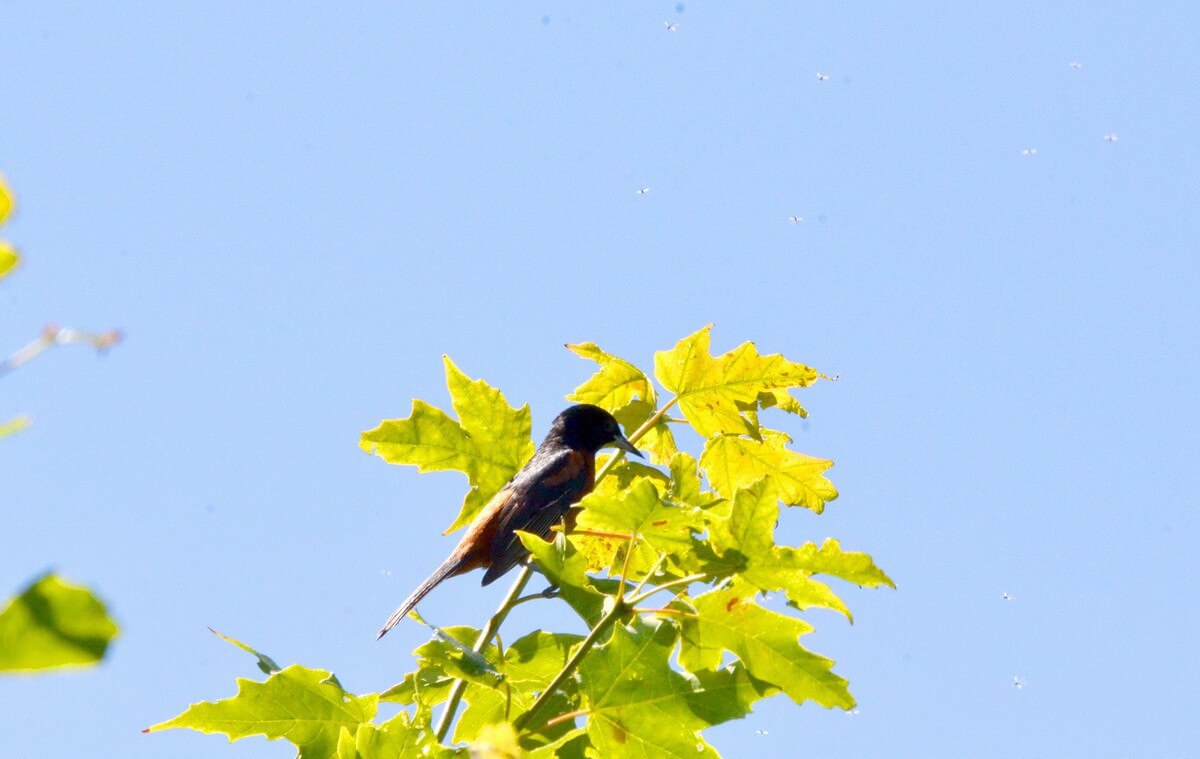
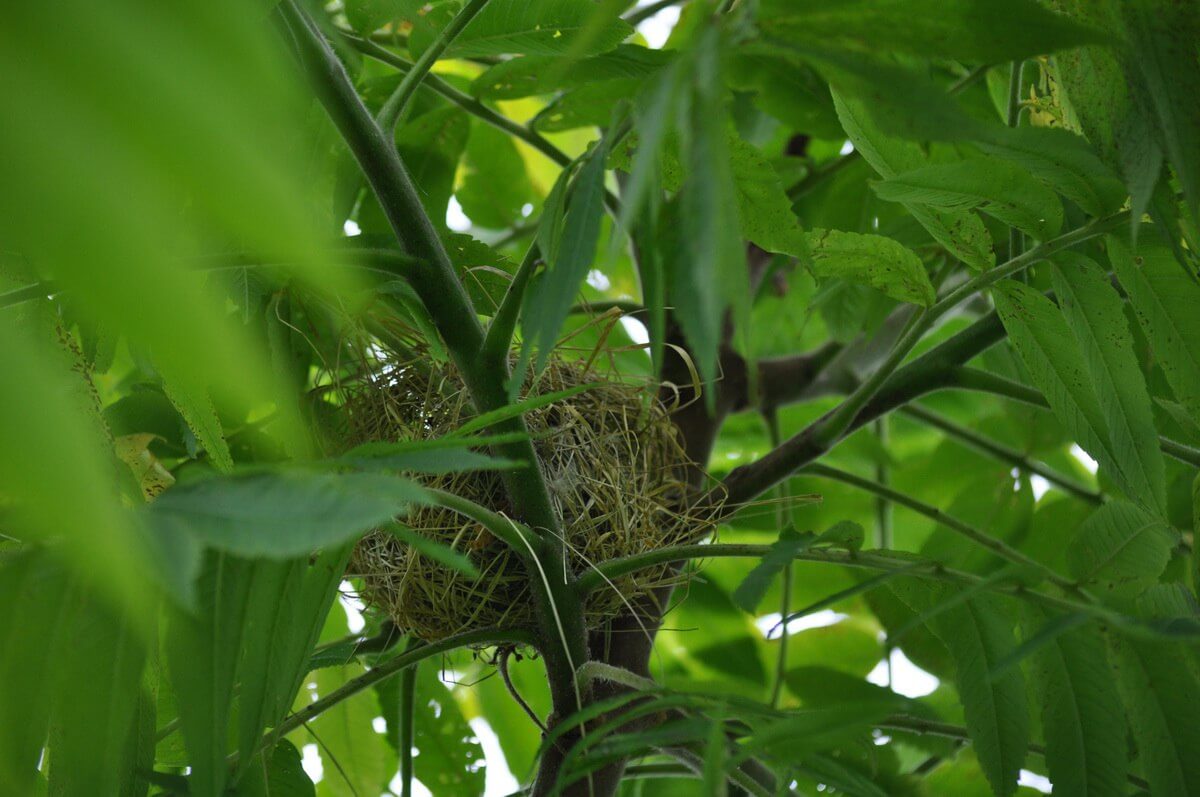
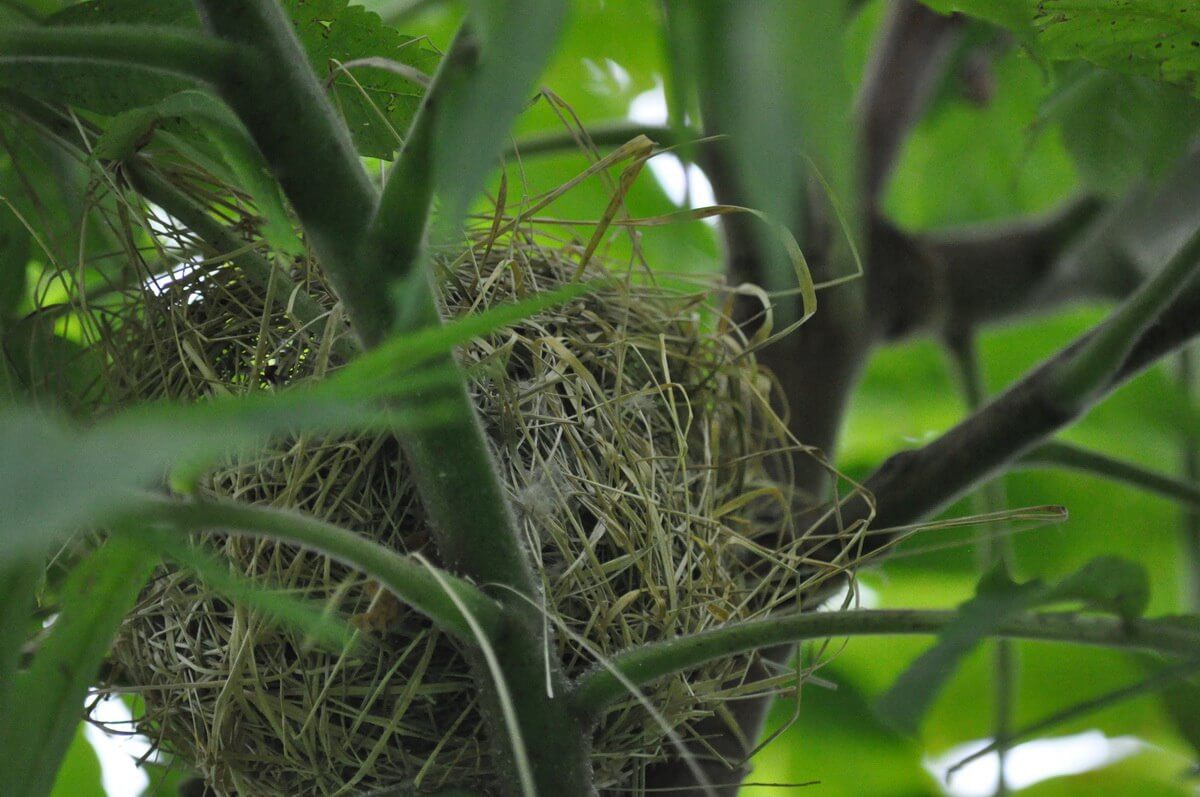
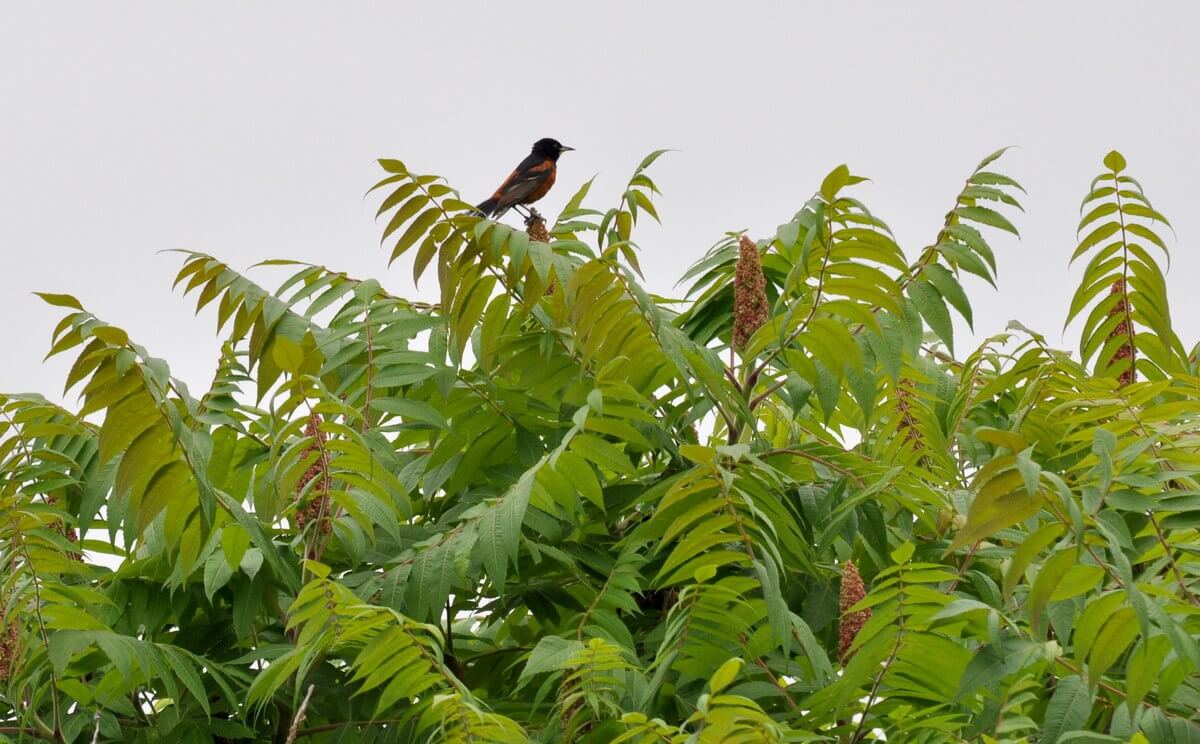
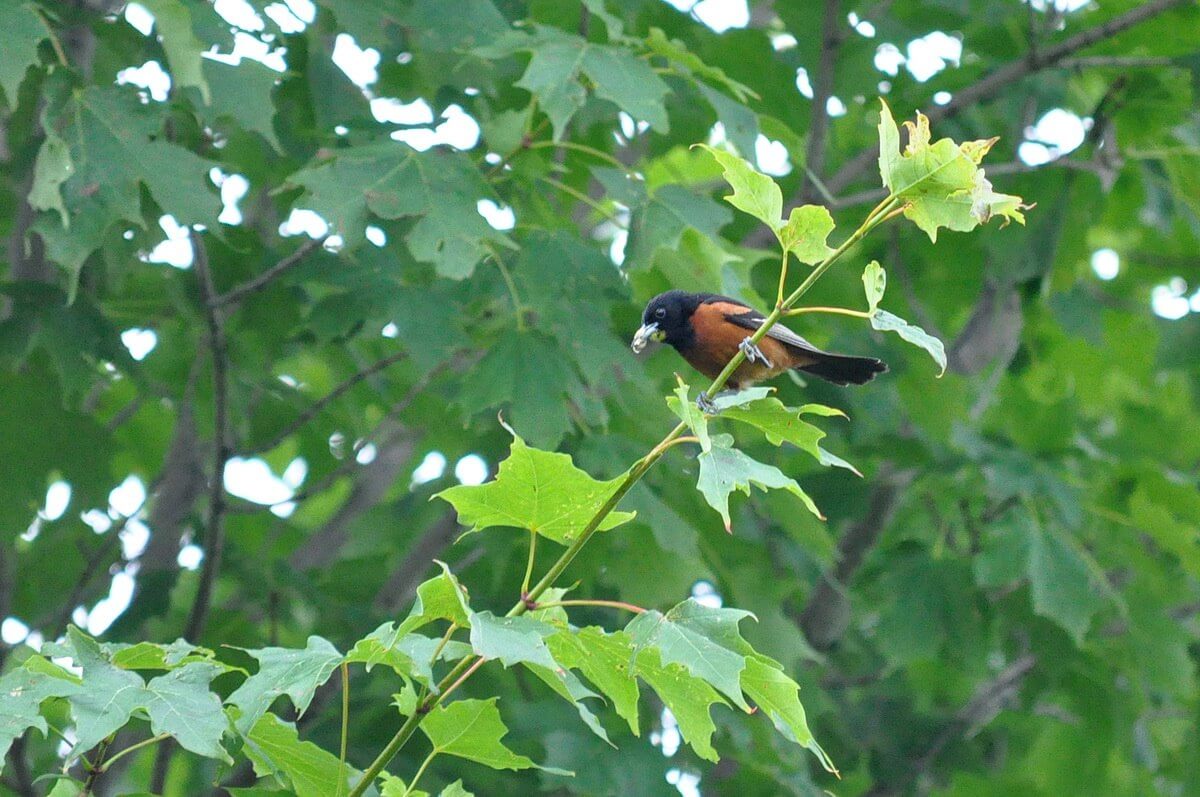

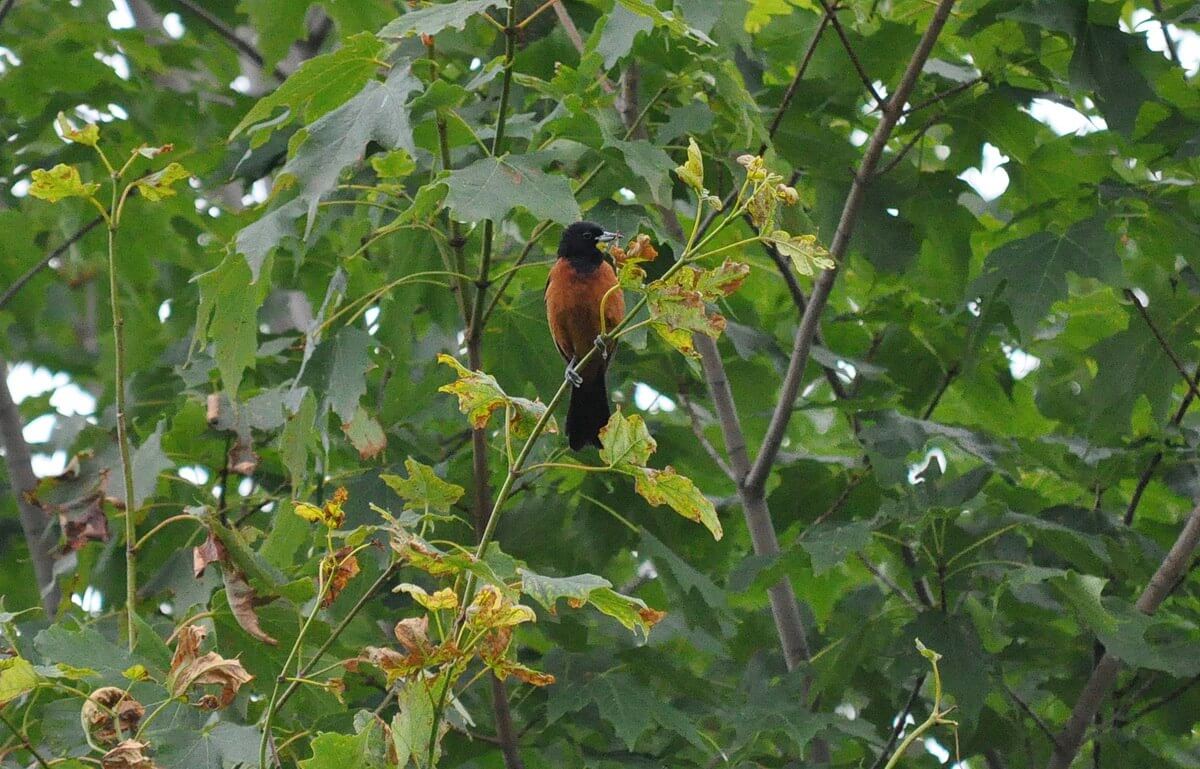
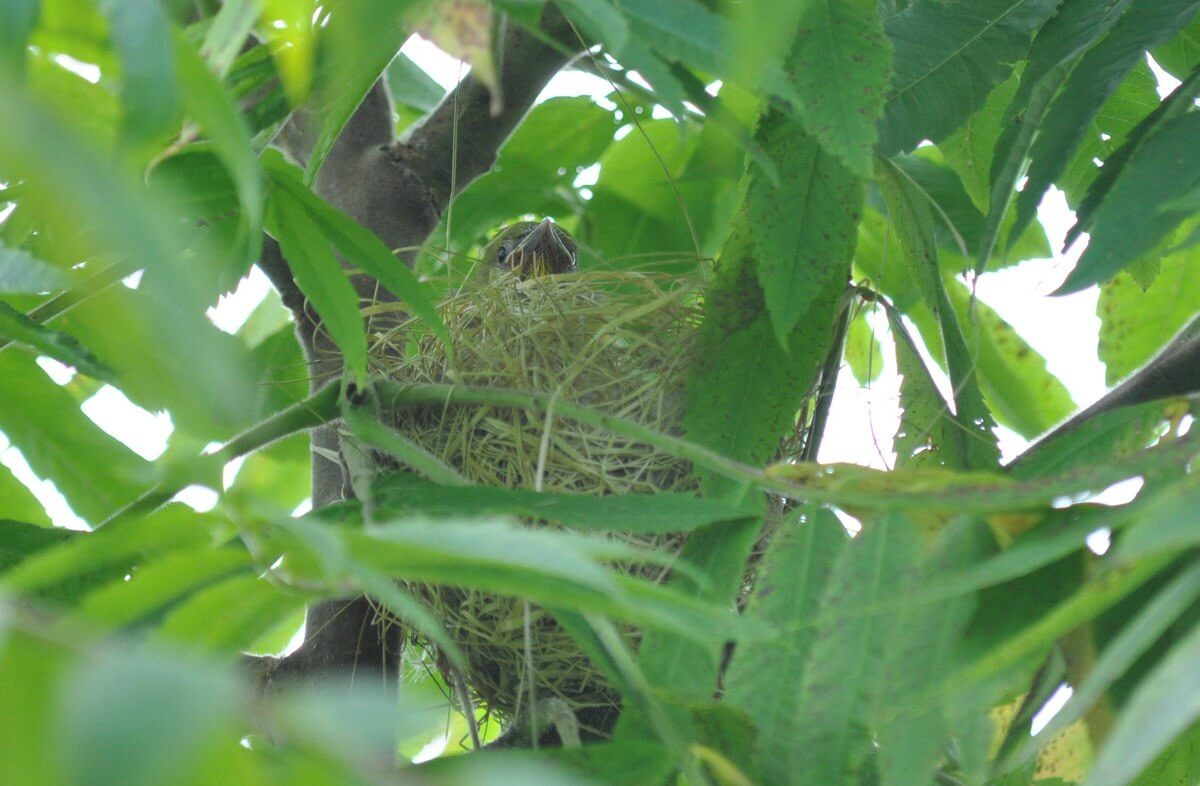
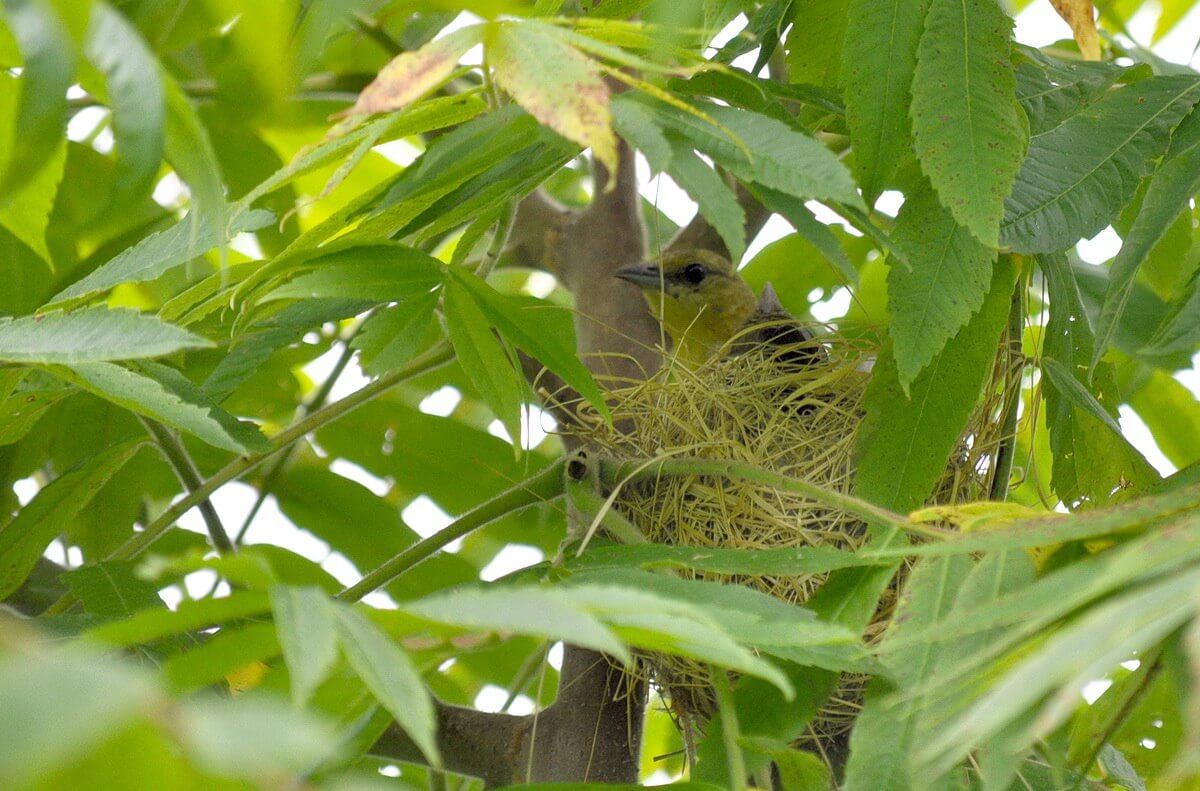
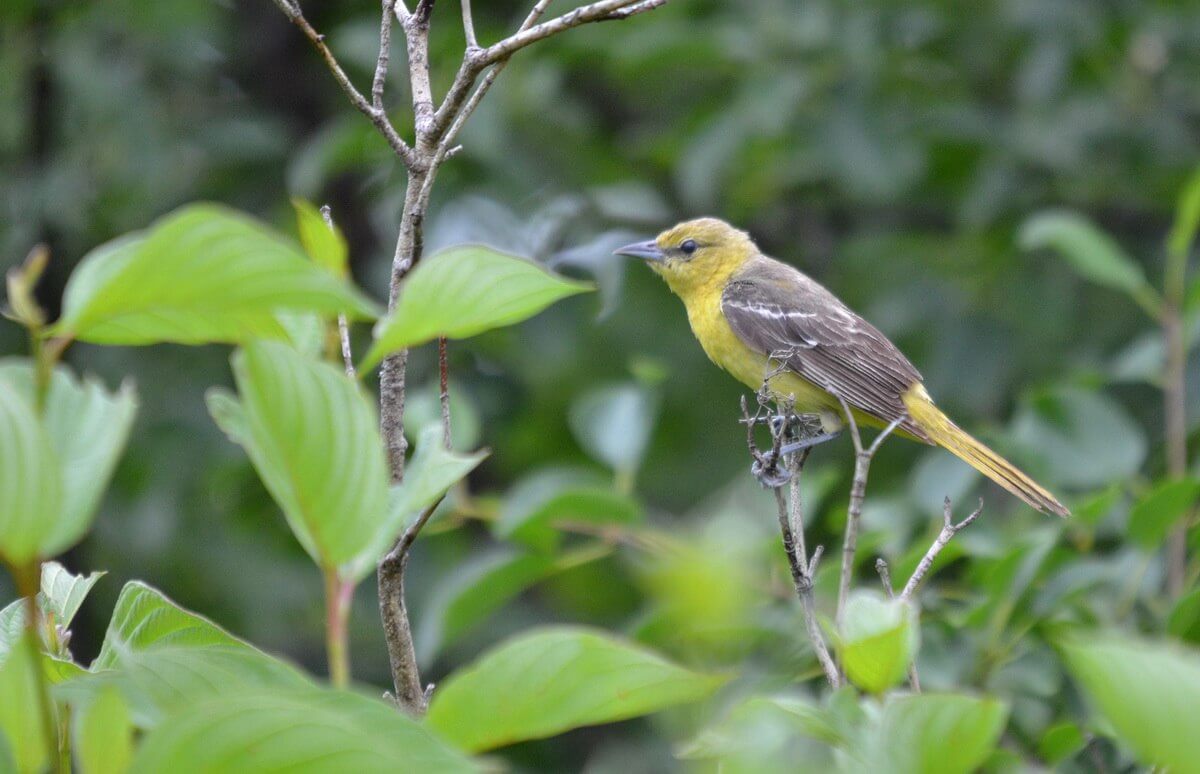
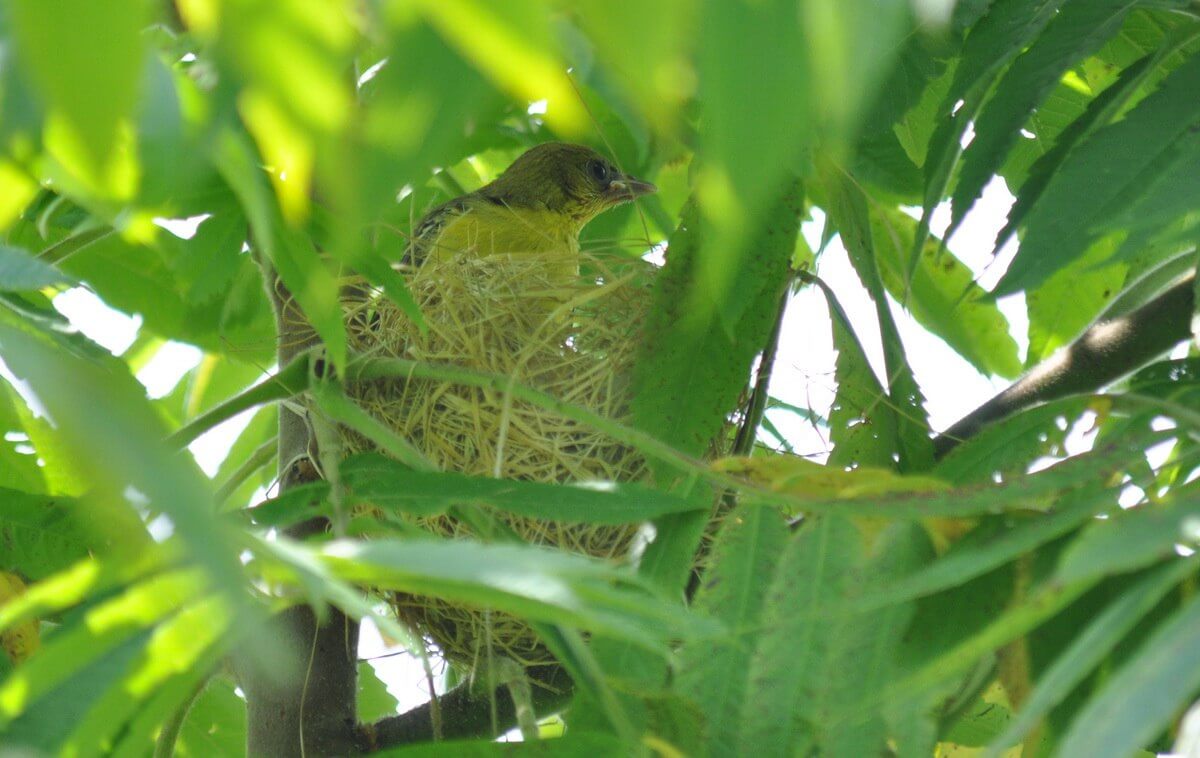

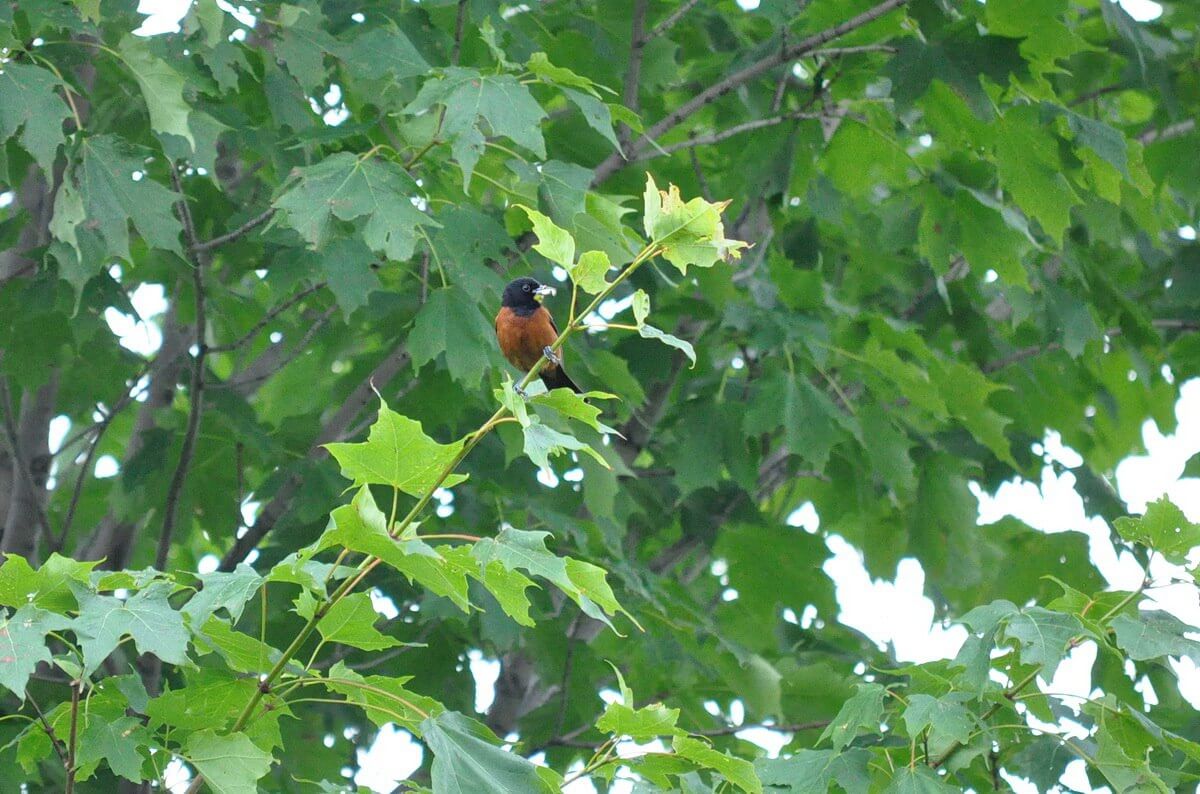
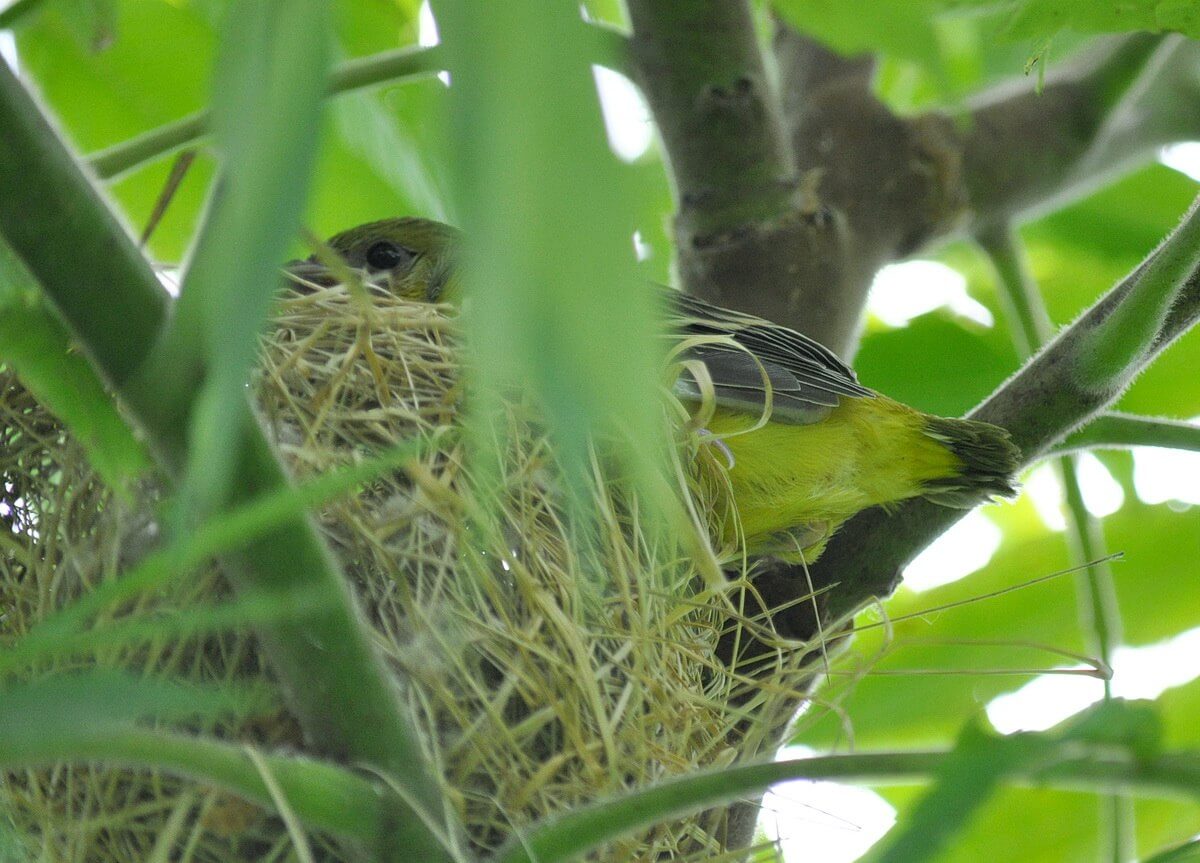
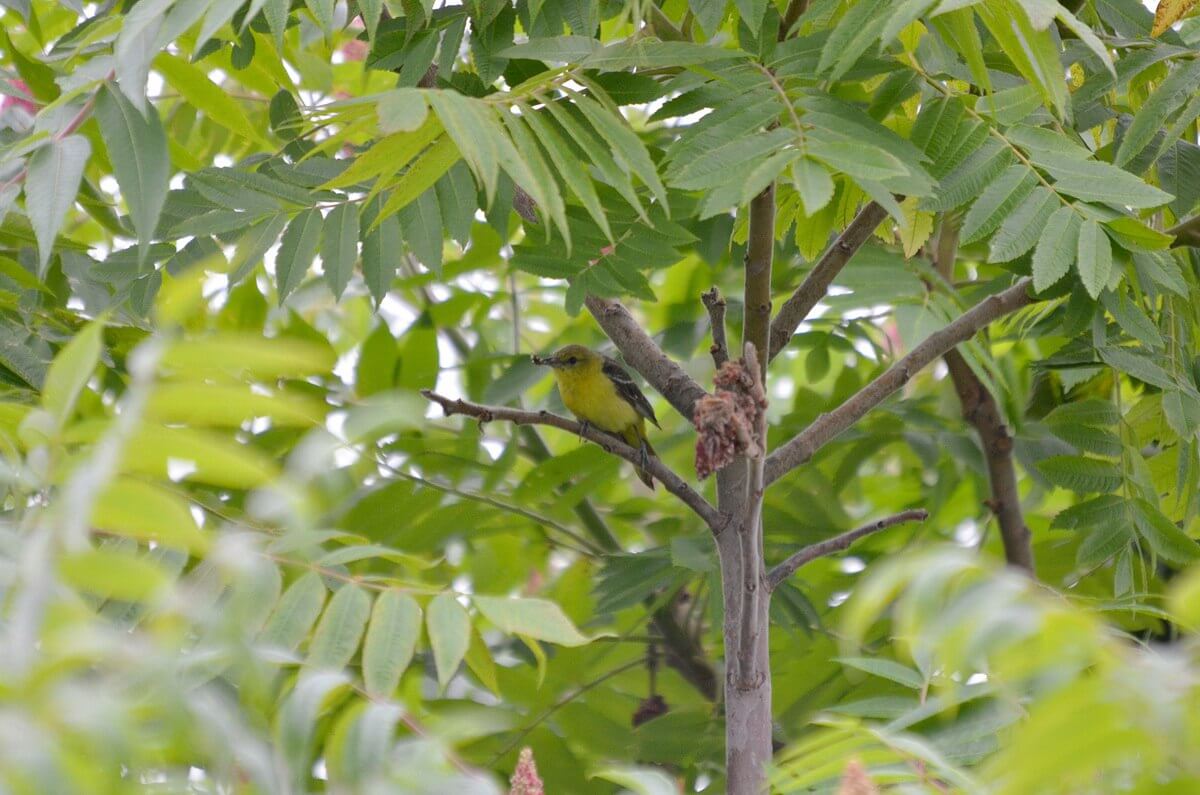
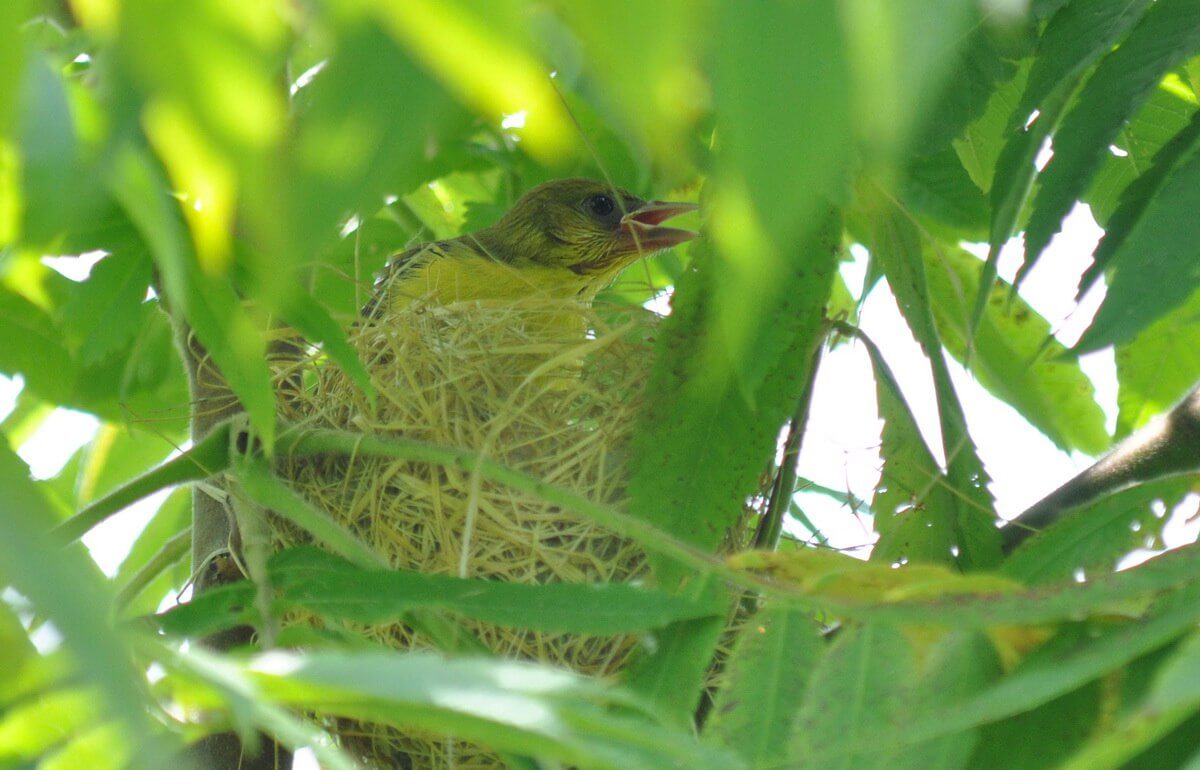
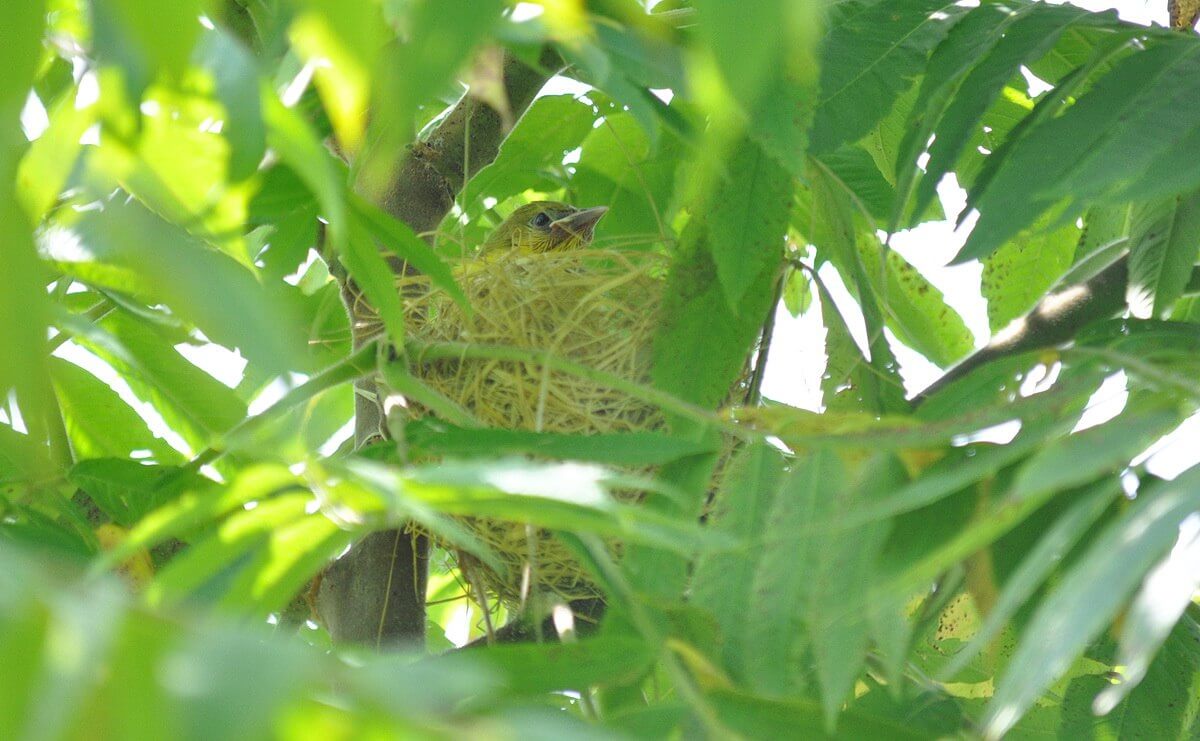

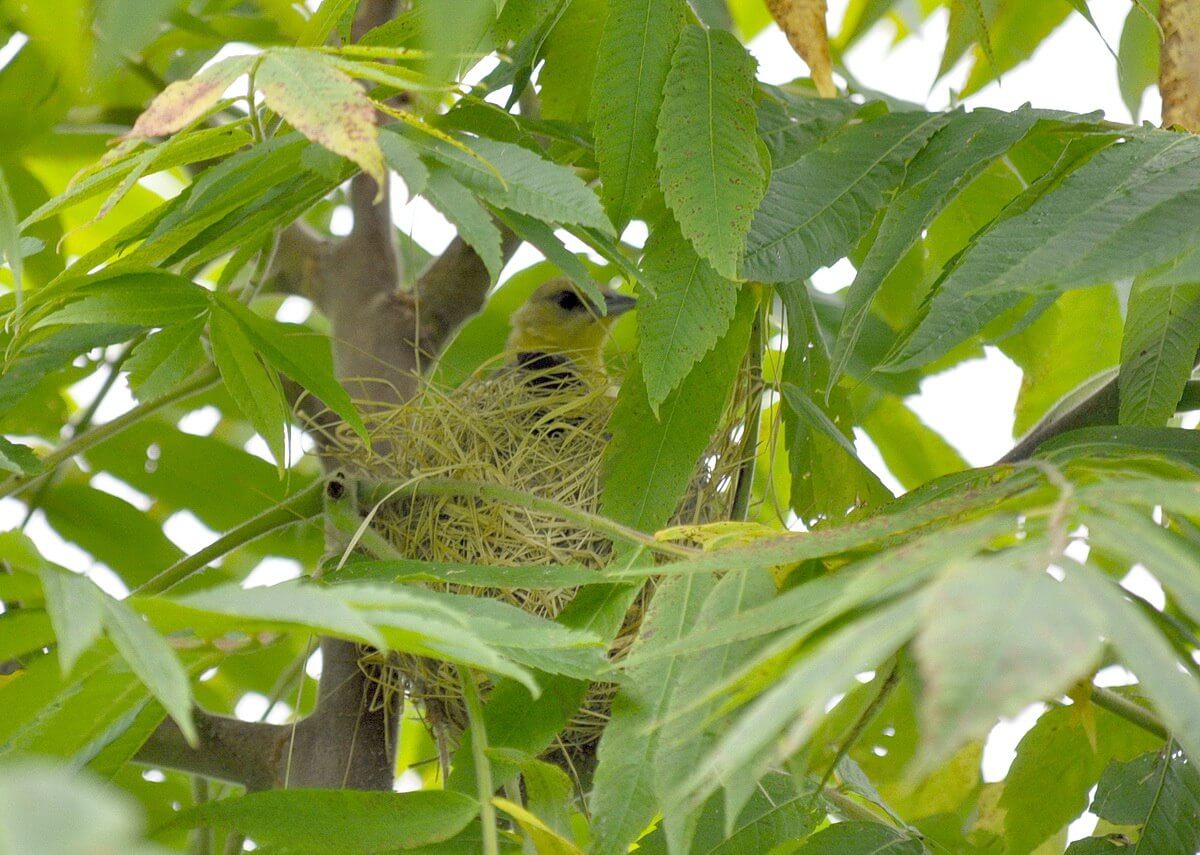
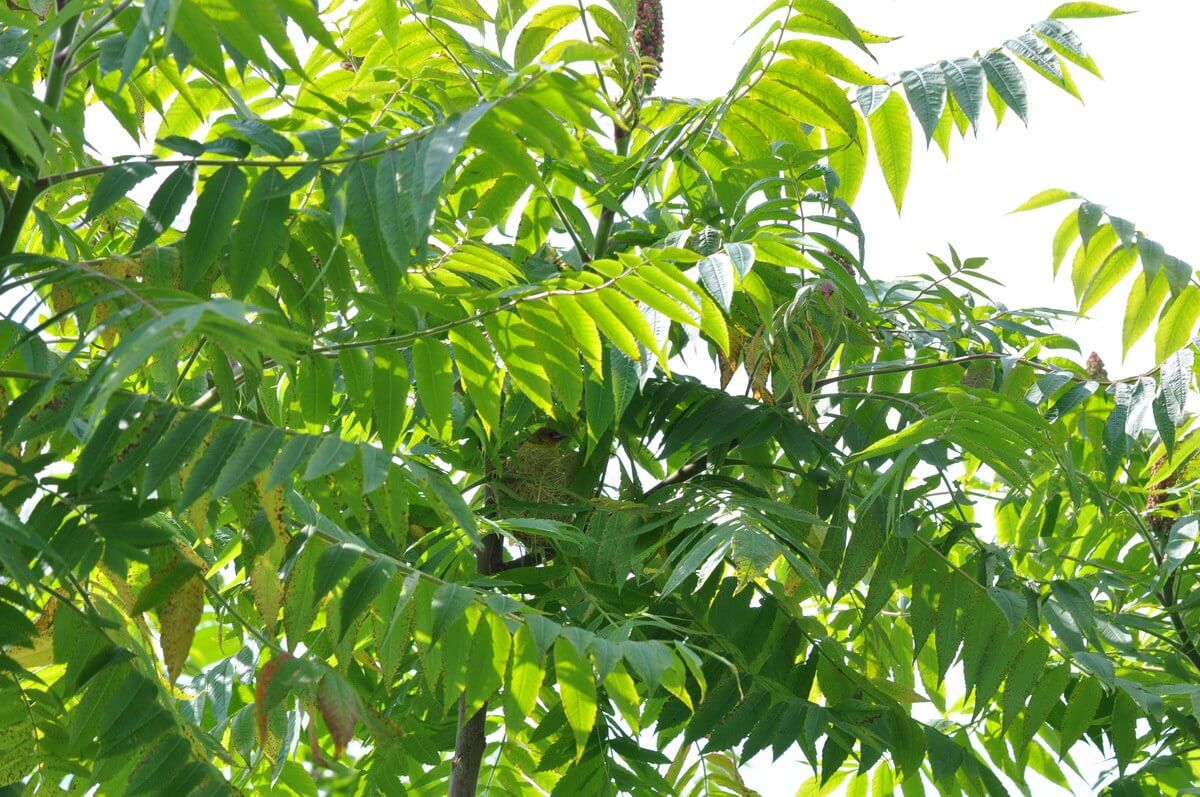
another amazing find. I’ve only ever seen a Baltimore Oriole before.
Baltimore Orioles are most gorgeous birds, but it is always a thrill to come upon a species that we have never seen before. I think years ago, we got a glimpse of an Orchard Oriole in a tree on the boulevard here at home, but to have the opportunity to observe a pair of adults with their nestling was very special.